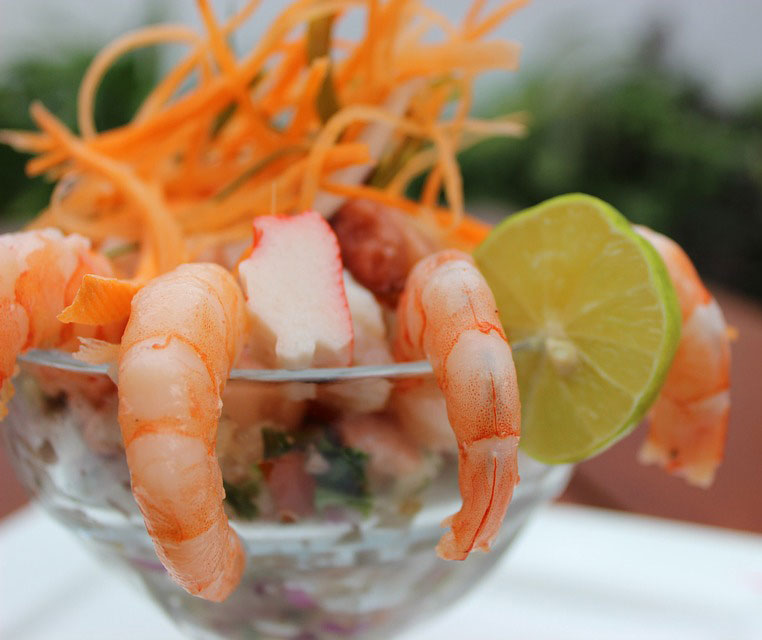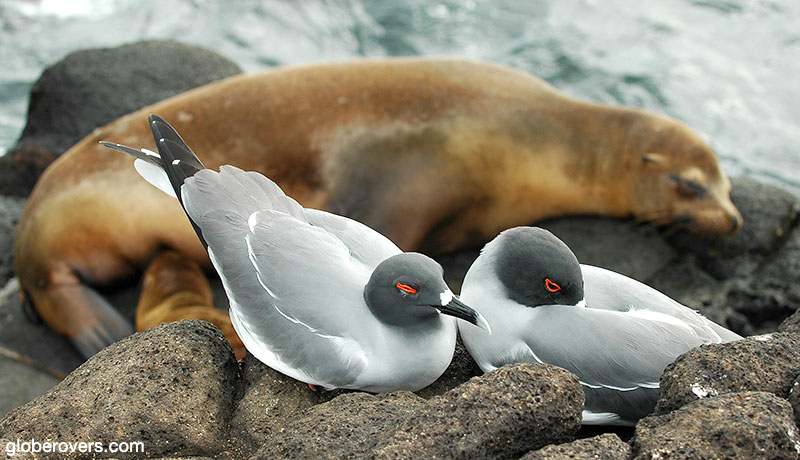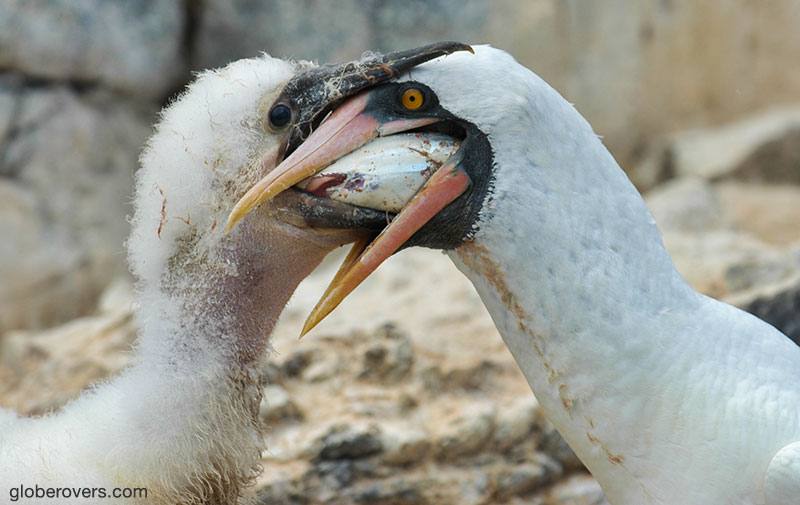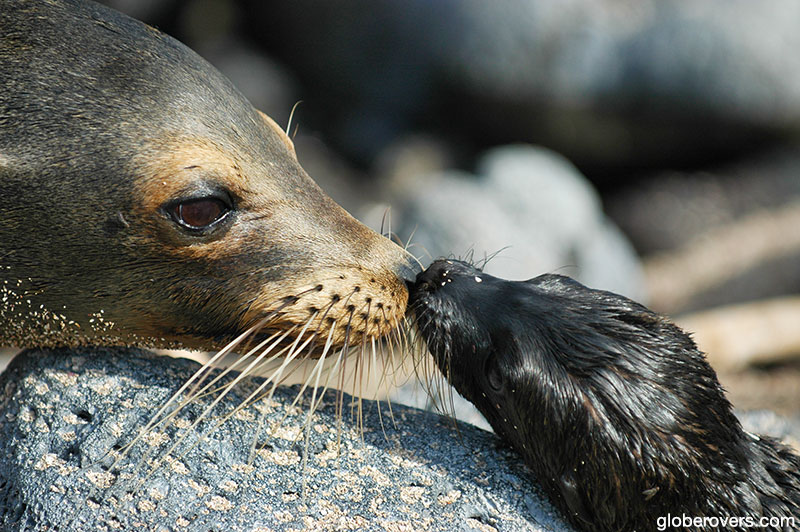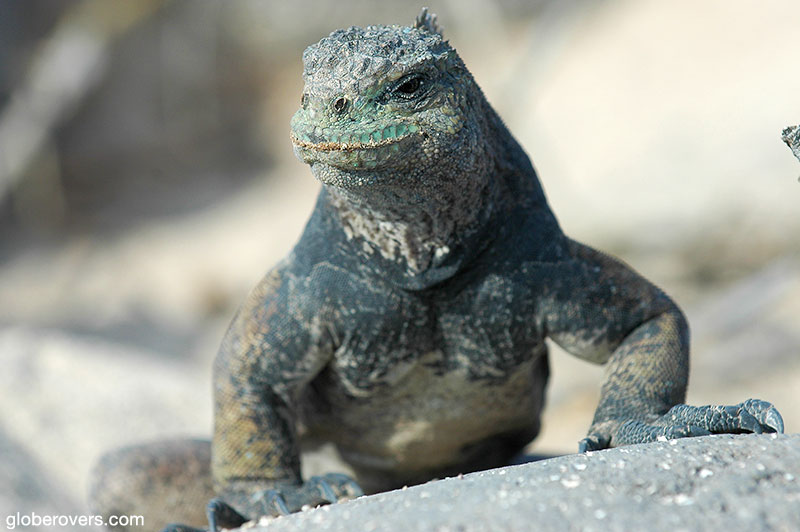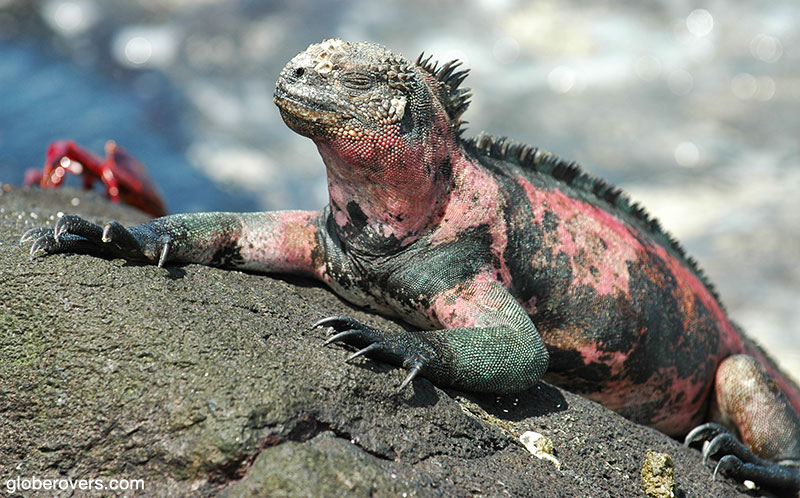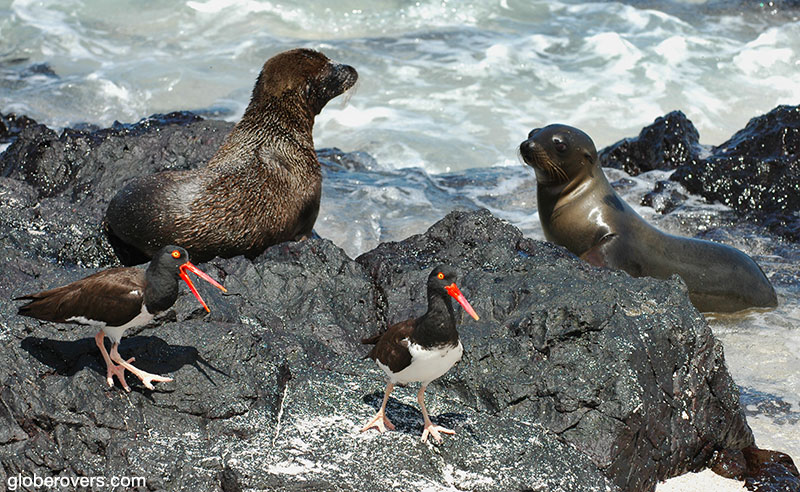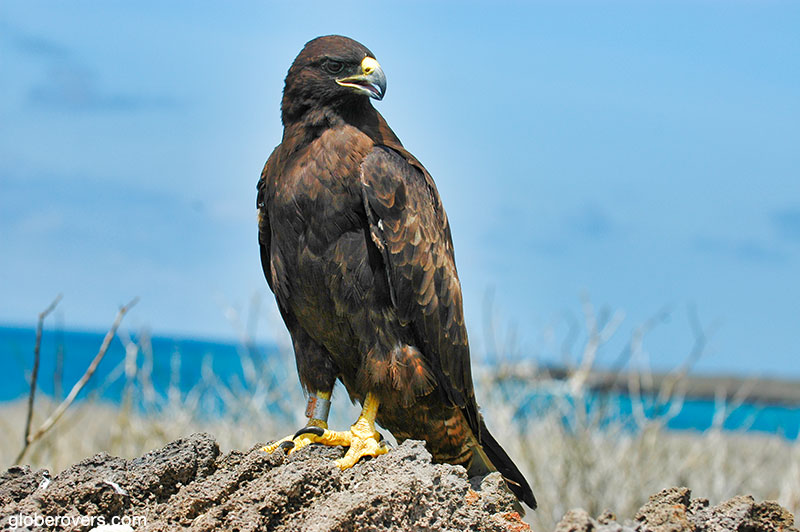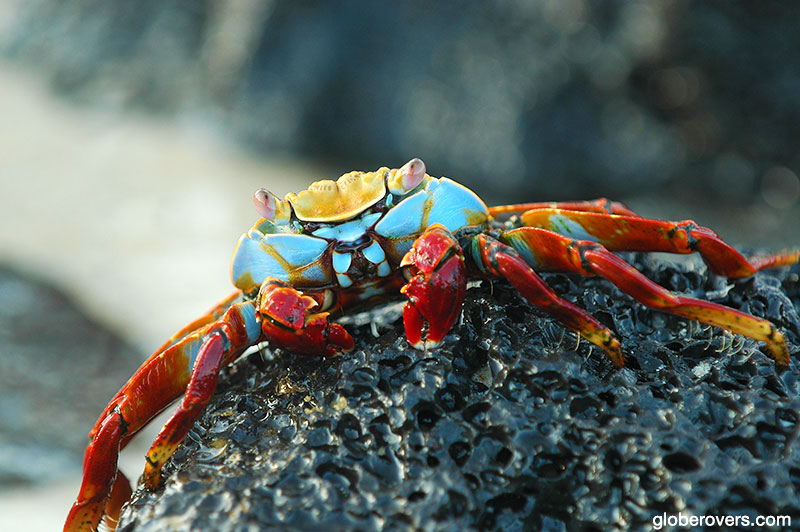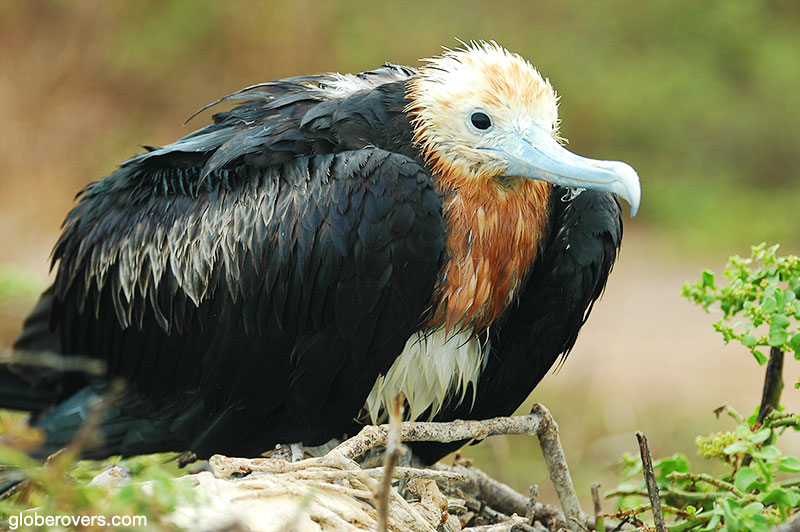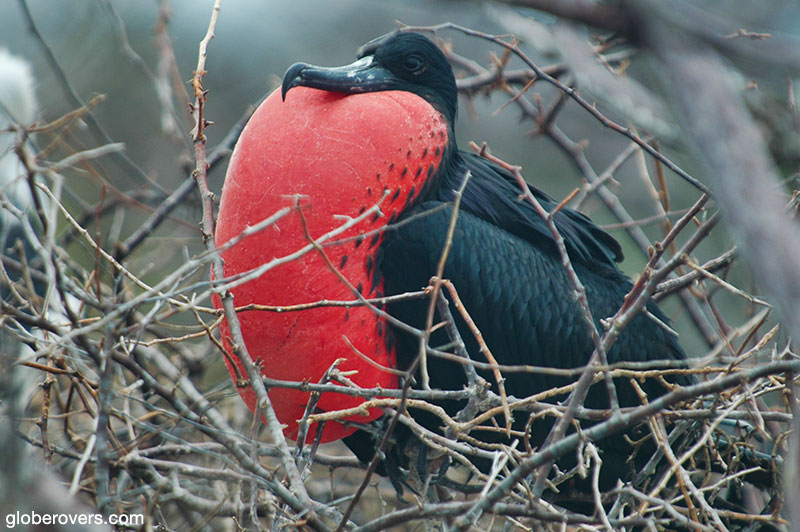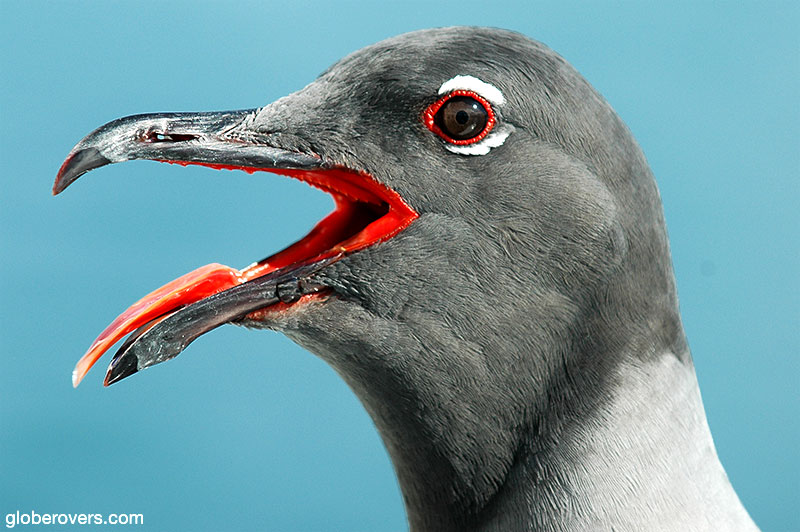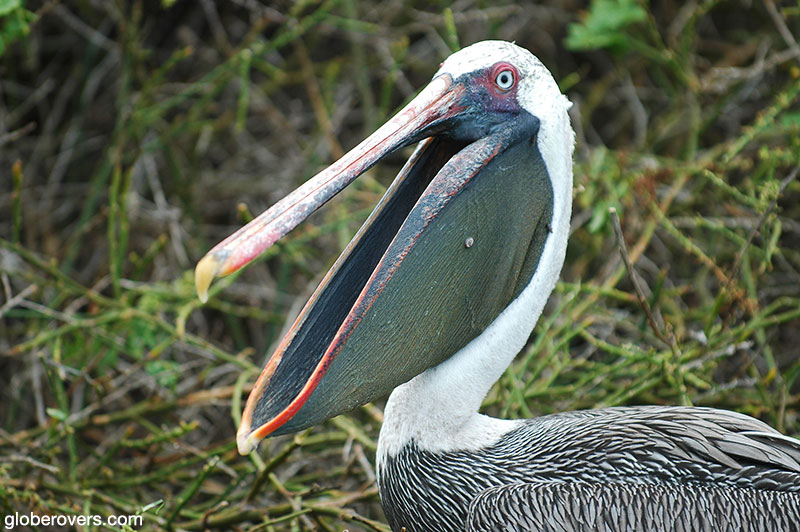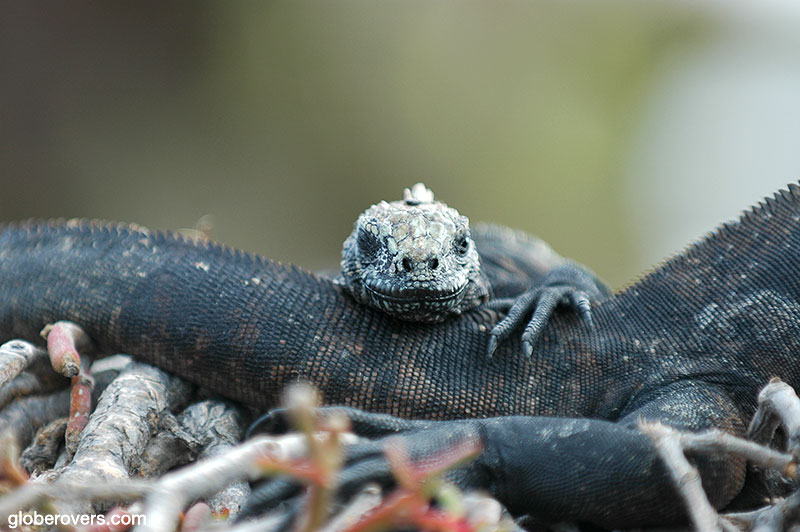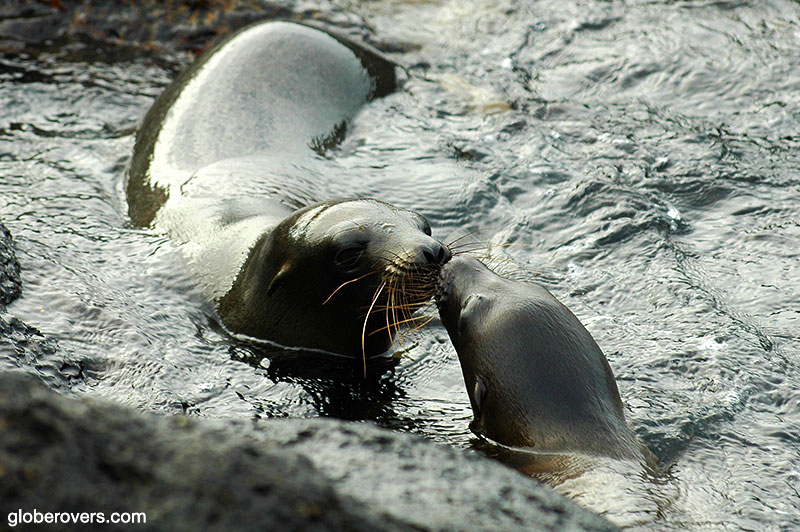
Galapagos, named after the shells of saddlebacked Galápagos tortoises, is an archipelago of volcanic islands distributed around the equator, almost 1,000 kilometres west of continental Ecuador.
Ecuador’s Galapagos Islands are famed for their endemic species studied by Charles Darwin which supported his theory of evolution by natural selection back in the 1830s.
Darwin, aged 26, reached the remote Galapagos Islands in September 1835 on board the HMS Beagle, a three-mast ship, from Devonport (Plymouth) in the United Kingdom. Having left the U.K. five years earlier, at the tender age of just 22, his Galapagos stop-over was only a short part of his almost 5-year global rendezvous via Australia, South Africa, and Brazil.
Why travel to the Galapagos Islands?
- The low-down: The Galapagos Islands – a wildlife photographer’s dream destination. It is a trip you will never forget and you will come back with tons of incredible photos, if you are good at what you are doing, of course.
- The brightest highlight: Getting so close to wildlife is an incredible feeling. Just sit down and relax. They will come so close to you and then ignore you and play around you as if you are invisible.
- Intrepid destination: Not as intrepid as it used to be. Nowadays the islands are getting way too many travellers. However, while most people are eating and drinking in the main towns (yes there are now towns and dogs), or on their luxury love boats, you can easily get away from it all.
- Globerovers score (10 is highest): It is an incredible place but you need some careful planning to not be disappointed. If you do it right, you will have an awesome time. The GlobeRovers score is a full 10 out of 10.

Darwin’s short visit to the Galapagos is arguably the most significant contribution to his book, The Zoology of the Voyage of HMS Beagle, which consists of five parts: Fossil Mammalia, Mammalia, Birds, Fish, and Reptiles.
At the time of his visit, Darwin was likely one of only a few humans roaming these remote islands. Other than his entourage of 74 people who joined his journey, few people lived on the islands.
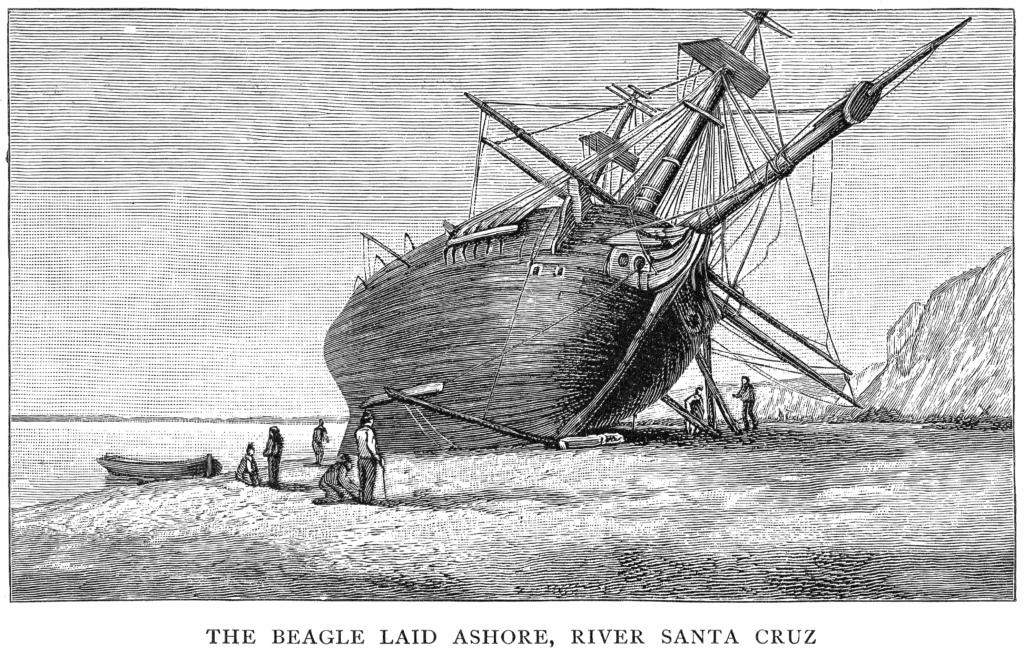
Sadly, the days when Darwin was one of the few visitors to these remote islands are long gone. No longer are these islands as uninhabited as they once were!
In addition to the permanent residents, over a quarter of a million tourists visit annually, staying in almost 300 hotels and on about 100 live-aboard boats and cruise ships.


The growth of the lucrative tourism industry is not exactly out of control, according to the Ecuador government who claims to “fully understand and control” the impact of tourism on the fragile ecosystem of the islands. Apparently “thousands of tourists” are annually refused entrance to the islands, in their effort to minimize the human impact.
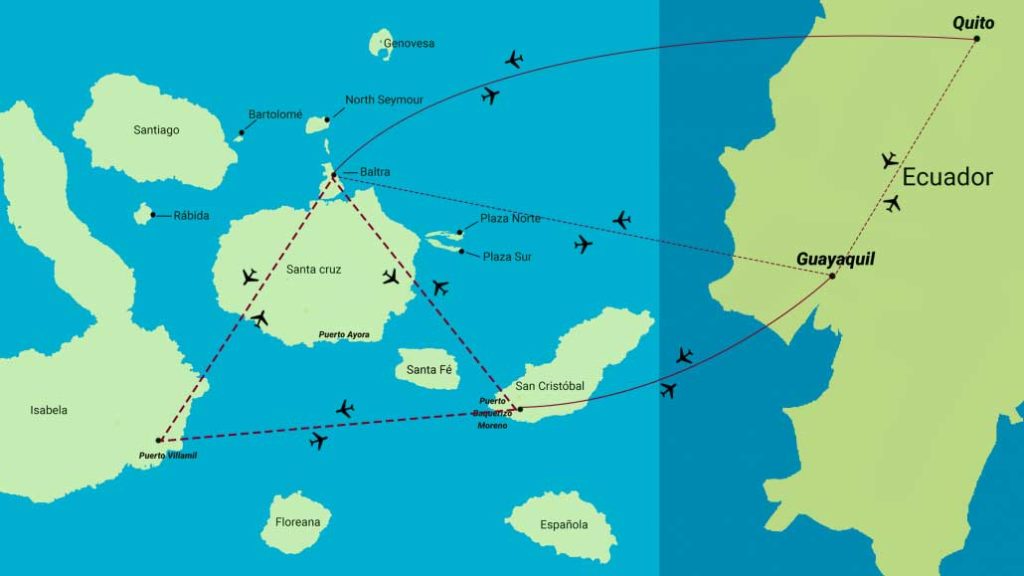
The shortest distance (as the crow flies) between the Galápagos and Quito is 1,388 km (862 mi).
A four-hour flight from Quito, the Ecuadorian capital, takes you right into the main island of Santa Cruz from where you can take a bus to the largest town, Puerto Ayora. While most flights from Quito (often via the coastal town of Guayaquil) arrive at Puerto Ayora, you can also fly into Baltra (South Seymour Island) and San Cristobal Island. Flights are not cheap and foreigners pay significantly more than local Ecuadorians (though not sure if this is still true today).
Avoid the high season! Low season is generally regarded to be around April and May and September and October. June to December is generally called the “dry season,” but in August and September, it can be persistently overcast with thin cloud layers.

The rains during the wet season (January to May) tend to be short-lived and pass quickly, leaving behind gorgeous blue skies. When I visited in early February the weather was perfect and not too many tourists. The sea is calmest during the wet season.
Be careful. During the dry season – especially August and September – the sea can become very choppy. Some say the best time to visit is mid-April to mid-May. Don’t bank on anything. Conditions can change unpredictably!
The best way to experience these natural wonders is to board a live-aboard boat for a week or two. Boats sail at night between the many islands and offer daytime hiking and diving among land and sea creatures. One of the most amazing experiences on the Galapagos Islands is that the animals have little fear of humans. Walk up close to most animals but keep a comfortable distance with respect to this special human-animal relationship of trust. Never touch the animals!
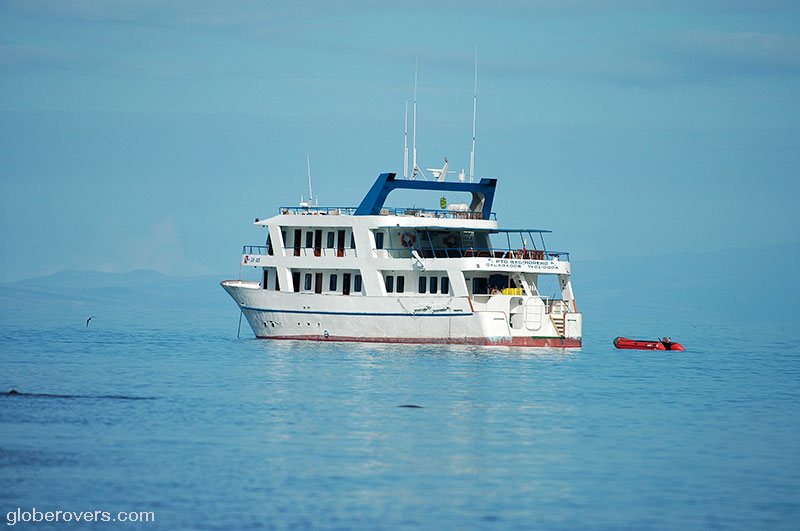
If you have the time, just fly to Puerto Ayora and visit a few of the local booking agents. There are many types of cruises to choose from – Economy, Tourist, Tourist Superior, First Class, and Luxury Class. Even if you have the money, you may want to avoid the Luxury Class – unless you are a spoiled brat!
The Economy and Tourist Class are known to have more down to earth and friendly travellers on board. Don’t consider a cruise of fewer than eight days.
The most amazing experience at the Galapagos Islands is that the animals have little fear for humans.
Every night you will sail from one island to the next and during the day you’ll explore the islands by foot, and snorkel with the friendly Galapagos sea lions and fur seals. Feel free to play with the juveniles but stay clear from the grumpy and very territorial males – especially the old and big daddies.
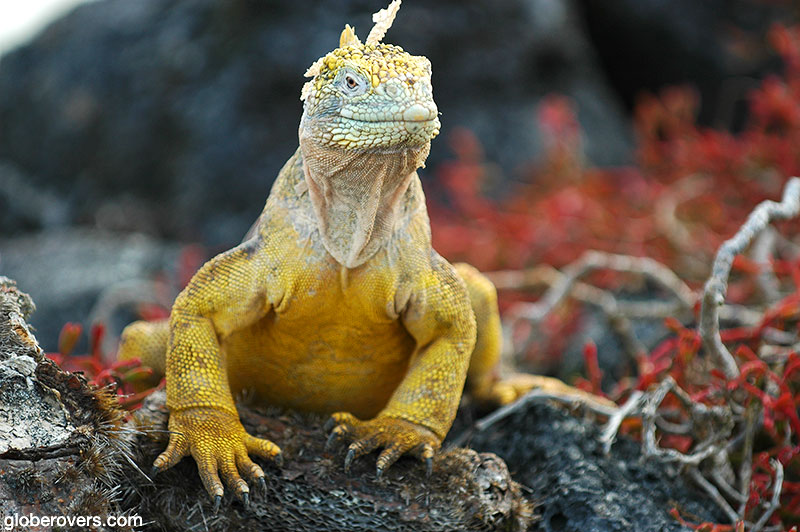
Most animals you can approach very closely but please, do keep your distance and don’t test the limits of these amazing animals. Never touch, and certainly no feeding of the animals and do not get between a parent and their juveniles.
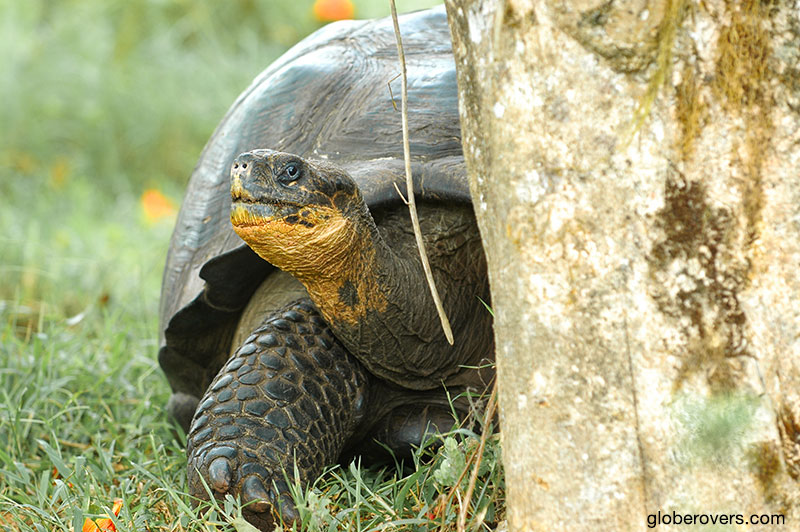
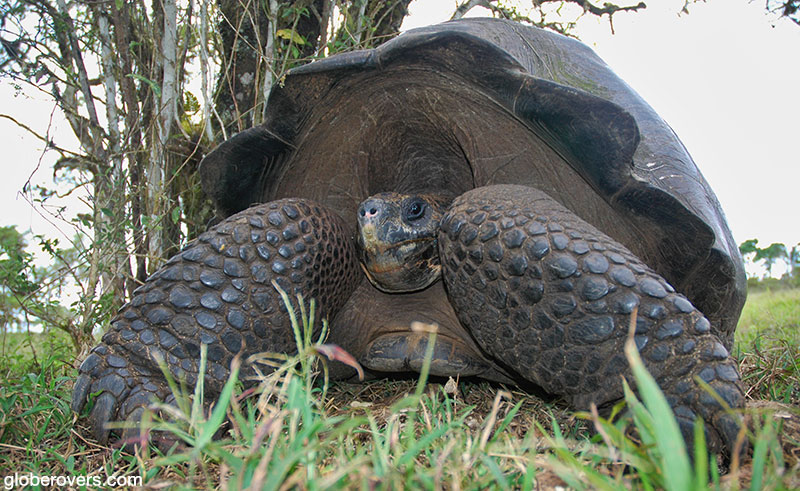
Enjoy the seas and feel free to plunge off the roof of your boat (unless you’re on a Luxury Class boat which likely will prohibit it). Two warnings: many boats flush their toilets directly into the sea so be careful where you take the plunge. Also, these waters have sharks so be careful.
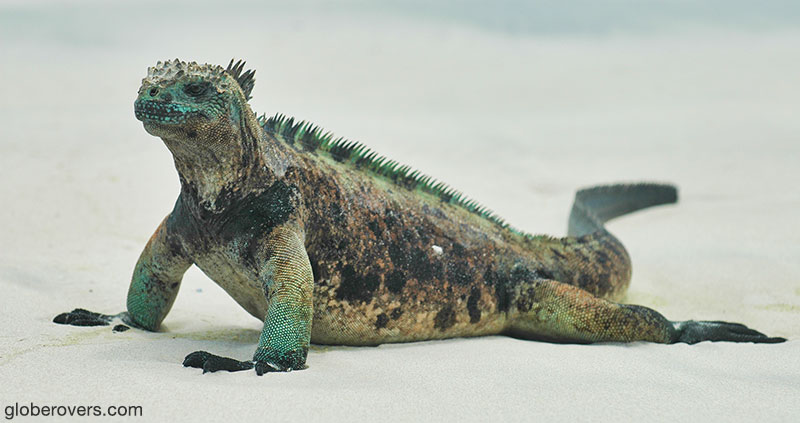
While the island cruise is a must, make sure to spend a few days on the islands of Isabela, Santa Cruz, and San Cristobal. These are some of the few islands where independent travellers (without a guide) are allowed. Overnight stays are also possible.
Also, try to befriend one of the locals who own property where you can check out the Galápagos tortoises. I befriended an American guy referred to by his wife who works in Puerto Ayora and he came to pick me up in town and took me to his farm where I spent an entire day roaming amongst the ancient giant Galápagos tortoises. A wonderful day indeed!
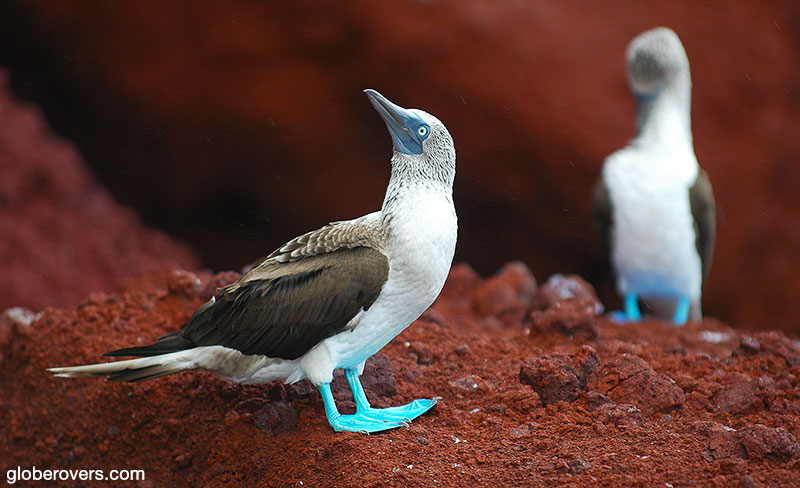
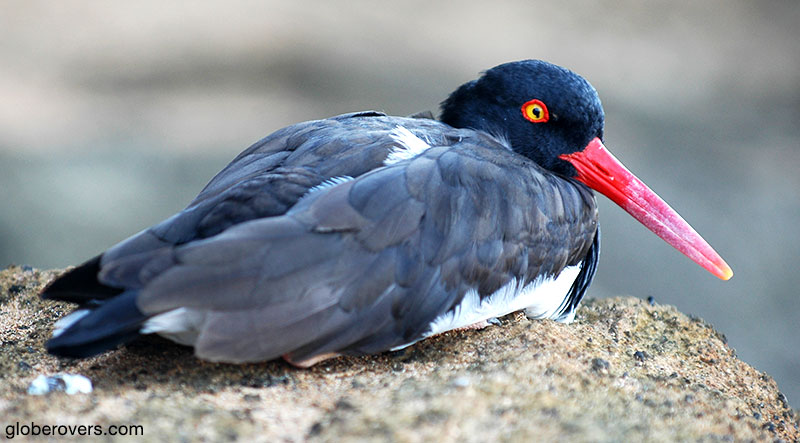
Be a very responsible traveller, respect the animals, and you’ll have an unforgettable time on Islas Galápagos. While there, don’t forget to eat a lot of ceviche, a seafood cocktail served in a glass – no not a drink, but a seafood salad!
Globerovers’ Galapagos Traveller Tips
1. Ecuador’s currency is the US dollar. Bring enough as the Galápagos is not cheap.
2. Take an eight or ten-day boat cruise. Don’t base yourself in a hotel and take day trips.
3. If you’re on a budget – consider buying your boat cruise ticket in Puerto Ayora – but only if you have enough time. Shop around and negotiate without fear. An Economy Class boat can vary from about $300 per day, down to $160 per day. In high season you may have to wait a week for your preferred class boat. In low season, maybe only a day or two. Try to avoid booking online which could be significantly more expensive.
4. If you want to select a specific boat, make sure to read reviews of its crew and the boat’s performance and facilities. Not all Economy Class boats are as much fun as the one Globerovers took. Make sure to get some reviews before you book. Otherwise, hope for the best.
5. Plan for at least 12-14 days at the Galapagos including a cruise of 8 days and then go solo to explore the islands of Isabela, Santa Cruz, and San Cristobal for another 5 days.
6. Diving is good especially for manta rays and hammerhead sharks. The water is not tropical so you won’t see much coral. Most boats rent snorkels and fins or you can hire in town.
7. Whether diving or snorkelling or swimming be careful as currents can be strong during June to December, and particularly in August and September.
8. If you love children, make sure to avoid a boat full of them – or any of them… as after 8 days on a boat with kids you may change your mind about them.
9. If you like a night-cap or sundowner, buy your liquor before going on board (best buys are on the mainland). If you are on the more luxury boats, bringing your own liquor may not be kosher – but then again money may not be an issue. Drinks on board are not cheap!
10. If you get seasick – then it is best is to stay on solid land – obviously.
A few more photos of Galapagos wildlife

Swallow-tailed Gull and Galapagos Sealion 
Nazca Booby 
Galapagos Fur Seal 
Marine Iguana, Galapagos, Ecuador 
Marine Iguana, Galapagos, Ecuador 
Galapagos Sealion and American Oyster Catcher, Galapagos, Ecuador 
Galapagos Hawk, Galapagos, Ecuador 
Sally Lightfoot Crab, Galapagos, Ecuador 
Female Magnificent Frigatebird on the nest, Galapagos Islands, Ecuador 
Magnificent Frigatebird, Galapagos Islands, Ecuador 
Sally Lightfoot Crab, Galapagos, Ecuador 
Swallow-tailed Gull, Galapagos, Ecuador 
Great Blue Heron, Galapagos, Ecuador 
Brown Pelican, Galapagos, Ecuador 
Marine Iguana, Galapagos, Ecuador 
Galapagos fur seal, Galapagos, Ecuador
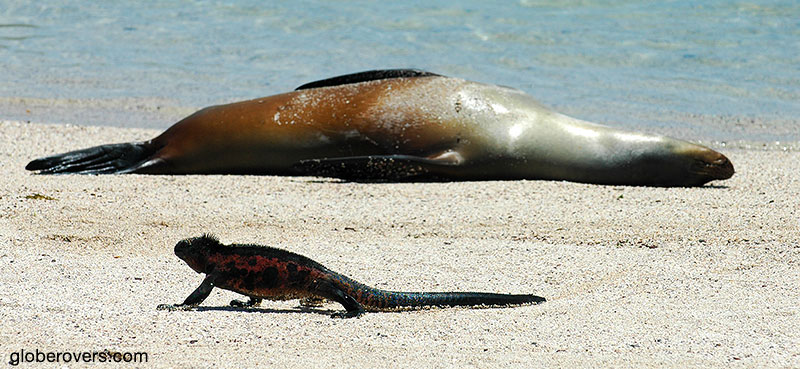
☛ Read more: Wildlife is my life!

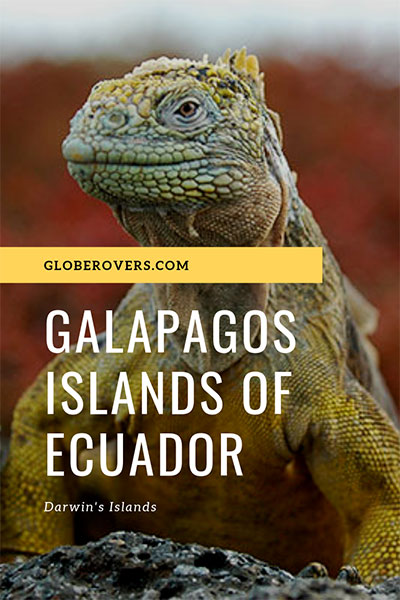

Blog post and photos by Peter who has been travelling almost full-time since 2005 and has been to over 122 countries. He visited several countries, such as Japan, more than 20 times. Peter is Editor-in-Chief and Publisher of GlobeRovers Magazine, an independent travel magazine focused on intrepid destinations.


